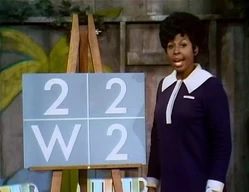There are certain listings in the city of Toronto for which I know the names of the sellers off-by-heart.
I’m not joking.
Every day, multiple times per day, I will check out my TorontoMLS home page and scroll through the new listings of the day. And every so often, when I see this property or that property, I already know who the seller is before I’ve even clicked on the listing.
Maybe that’s indicative of a photographic memory? Or maybe it’s just association?
I see the address and then my mind pictures the name of the seller on the listing, as I have seen so many times before.
There are certain properties that have been listed over and over and over again! So many times, in fact, that the addresses, names, specs, and prices are etched into my brain, for good or for worse.
I have penned several blogs this year on TRB about properties listed “over and over,” so today’s post is seemingly nothing new.
Except that this time around, I want to play a game!
Do you want to play a game – says the creepy voice in the movie “SAW.”
Too bad, you’re already here, so let’s go.
At times, I will tell you that pricing real estate is rocket science, and at other times, I will argue that it isn’t.
All the while, we know that “a property is only worth what somebody is willing to pay for it,” so that completely undermines any argument one could make as to the skill of pricing in advance of any sale.
But what if we worked backwards?
What if we looked at a property that did not sell, and continues to be listed over and over, and looked at what it would have, could have, should have been listed for?
Here’s the property in question:

This property has been listed fourteen times in three years and has failed to sell all fourteen times.
Well, that’s not completely fair. I mean, they did just re-list, so let’s say that the property has failed to sell thirteen times.
But I want to use the TRREB data, namely the “average 416 sale price” from selected months to examine how, where, or how some of these listings could be poorly priced.
We will need to make two assumptions:
1) A listing that does not produce a sale is deemed to be “over priced.”
2) An unsuccessful list price could have been successful 5% lower.
To the latter point, it’s not for you or I to say that a $700,000 listing, after 60 days on the market, “should” sell for $670,000. It could be more or less, but for the purposes of our exercise, we’ll be conservative.
Shall we?
Exercise #1:
Let’s look at the very first list price of $697,700 from September 11th, 2020.
Let’s compare this to the listing in July of 2021, when the property was listed for $698,888.
Based on the list prices, which are almost identical, we should assume that the market conditions were identical as well. We should further assume that the 416 average condo price was the same.
Here’s the average 416 condo prices in those months:
September, 2020: $686,191
July, 2021: $715,977
Something doesn’t look right.
The average condo price went up by 4.3% from September of 2020 to July of 2021.
So let’s work backwards.
The condo did not sell in July of 2021 when it was listed at $698,888.
Let’s assume that it was “worth” somewhere around $663,943, which is 95% of that list price.
Now, subtract the 4.3% that the market increased from September of 2020 through July of 2021, and we have our “value” as of September of 2020:
$636,571.
That’s what the property was probably “worth” when the owners listed the first time, September of 2020, for $697,700.
No wonder they didn’t sell.
–
Exercise #2:
Let’s look at a list price at “peak” market, which was February of 2022.
For reference, this is when the GTA average home price peaked at $1,334,554, which is a number I’ve used so many times that I just typed that off by heart.
The average 416 condo price in February of 2022 was $822,090. The condo peak was actually in March, but you get the idea. The spring of 2022 was our peak.
First, let’s work backwards.
The condo was listed, unsuccessfully, for $729,000.
Let’s use the same figure as we did in Exercise #1, which was the first listing from September of 2020, priced at $697,700.
Assuming that when this property was unsuccessfully listed for $729,000 in February of 2022, it was worth 95% of that price, that would equal $692,550.
Now, let’s get our data for the two periods. The average condo price in:
September, 2020: $686,191
February, 2022: $822,090
That’s a 19.8% difference.
And that would put the value of the condo when first listed for $697,700 in September of 2020, at:
$578,088.
Wow.
That’s even worse than in Exercise #1.
For those that aren’t following or might be skimming at this point, just think of this: if a property didn’t sell at the absolute peak of the market in February of 2022 for $729,000, we can use the appreciation and average sale prices to determine what it could have been worth in a previous time period.
In this case, we’re looking at September of 2020.
And if we combine Exercise #1 and Exercise #2, we know that, despite being listed for $697,700, the property was worth somewhere between $578,088 and $636,571, depending on which exercise you prefer.
Based on Exercise #2, it looks like the list price in September of 2020 was completely out of whack.
–
Exercise #3:
Now, I want to compare the “peak” of February of 2022 to the listing from one year later in February of 2023.
This exercise doesn’t even need math.
Simply:
February of 2022 list price: $729,000
February of 2023 list price: $727,900
Unless the market hadn’t moved at all, then the listing in February of 2023 was a completely wasted exercise.
Then again, if you follow my assumptions, you’ll see that even if the market moved, this was still a waste of time.
We have to assume that if the property was “worth” $729,000 in February of 2022, or anywhere near it, then it would have sold.
Right?
So why in the world would the sellers re-list one year later for the same price, unless the market had substantially increased?
But it didn’t.
The market, in fact, substantially decreased, which is why this was such a wasted effort.
Once again, let’s assume that the unsold property, priced at $729,000 in February of 2022, was worth 95% of list price, or $692,550.
Now we work backwards:
Average 416 condo price in February of 2023: $728,271
Average 416 condo price in February of 2022: $822,090
That means the average condo was worth 11.4% less one year later.
Thus, the “value” of the condo when it was listed in February of 2023 for $727,900 was actually:
$613,559.
And yet, the sellers listed for $727,900.
Odd.
–
Exercise #4:
Now, let’s look at the current listing, which is at $699,900.
Let’s compare this to the average home price at the “peak” of February in 2022, once again.
Average 416 condo price in September of 2023: $732,106
Average 416 condo price in February of 2022: $822,090
Working forward now, we can see that the average 416 condo price has declined by 10.9% since the peak in February of 2022.
Having established a “value” of $692,550 in February of 2022, that puts today’s value at:
$617,062
Right.
But for some reason, they’re priced at $699,900.
Oh, and there’s more:
There’s an offer date!
That’s right.
The property, now on its fourteenth listing, having been up for sale for three years, is now listed in a soft condo market with an offer date.
Oh, you can’t make this up!
–
Exercise #5:
Let’s do one final exercise, just in case any of you are thinking, “David, it’s not fair to use ‘peak pricing’ for your comparison.
Why don’t we use the listing from September of 2022 when the market had softened?
In September of 2022, the property was unsuccessfully listed for $729,000.
Using our 95% rule, we can estimate it was “worth” $692,550 at that time.
Average 416 condo price in September of 2023: $732,106
Average 416 condo price in September of 2022: $769,058
The market has declined by 4.8% since September of 2022, this providing a current valuation of:
$659,307.
So it’s not quite as bad as the $617,062 figure we arrived at in Exercise #4, but it’s still quite a ways off from the current list price of $699,000 that, oh-yeah-by-the-way, has an offer date.
–
Is this rocket science?
I know that not everybody is a “number person” but even if it’s not natural to you, I’m sure you can follow the math or at least the lesson therein.
Call it “trial by error,” if you want.
Or dumb it right down.
Picture a child sitting in front of three red Solo cups.
You tell the child, “Under one of these cups is a Hershey’s Kiss.”
If the child picks up the cup on the left and finds nothing, then picks up the cup on the right and finds nothing, then he or she can surely deduce that the Hershey’s Kiss is under the cup in the centre.
The same logic should be used when pricing condos with a poor track record, or rather, a great track record of NOT selling!
Tell a child, “The property did not sell last year when prices were MUCH higher. If we list today at the same price, and prices are much LOWER, will we be successful?”
I’m going to ask my daughter tonight.
But understand, or not, she’s six.
No disrespect to the multiple listing agents who have worked on this condo over the last three years, or the owners, as I’m merely using this as an exercise. But surely we can use the skill of deduction to understand value, right?
Think of Sesame Street:

“One of these things is not like the other. One of these things just doesn’t belong.”
That’s Susan, and that’s from 1969! Wow!
And I’m not being condescending here, folks. I think that sometimes if you break down a concept to its most digestible form, it’s absorbed a lot easier.
Then again, another adage simply confuses things:
“If at first you don’t succeed, try, try again.”
The idiom doesn’t say, “…at the same price,” so I can’t completely let sellers off the hook in this market.
But I have this listing bookmarked and I’ll be very interested to see what happens on “offer night,” oh boy…
































Different David
at 6:10 am
Performing this analysis assumes that the sellers are reasonable. As you know, some people “have to get their price”, and will wait as long as it takes, paying 9+% interest, signing offers back at full list price or even higher!
As the scholar Forrest Gump says, “Stupid is as stupid does…”
As a side note, there was an interesting article about these “Cash for homes” ads that are on traffic lights all over the GTA. Perhaps a topic for a future post?
Jimbo
at 7:26 am
Why wouldn’t you find fair market value then increase and decrease that amount with the average. To be conservative use an increase of 3%, 18% and then decrease by 9%. That would put it close to its current price. (I haven’t sat down and calculated yet.)
Unless the experienced thought process is they set a new floor with each new sale attempt further devaluing the listing?
Daniel
at 8:49 am
You don’t even need the math. Just looking at the unsold listings and the timeline, this is a case of “chasing the market down.”
lr
at 9:02 am
Listing a property can be likened to a fisherman casting his line into a lake. There are several similarities between the two activities:
Uncertainty: Just as a fisherman doesn’t know what kinds of fish are in the lake or whether they will be interested in the bait, a person listing a property may not be certain about the preferences of potential buyers or renters. Market conditions, buyer interest, and other factors can all be uncertain.
Quality of the Bait: The quality of the “bait” in the real estate context refers to how well the property is presented, its price, and its overall appeal. Just as a fisherman needs to use the right bait to attract fish, a property seller needs to present the property in a way that attracts potential buyers or tenants.
Persistence: Fishermen often cast their lines multiple times to increase their chances of catching a fish. Similarly, listing a property might require multiple attempts or different marketing strategies to find the right buyer or tenant.
Patience: Both fishing and real estate transactions can require patience. You may need to wait for the right opportunity, whether it’s the perfect buyer for your property or the right fish to bite.
Adaptability: Successful fishermen may change their bait or fishing location based on the conditions. Likewise, property sellers may need to adapt their strategies based on market conditions, feedback from potential buyers, or other factors.
In both cases, persistence and adaptability can be key to achieving success. While there are no guarantees, by casting your line (listing your property) multiple times and being prepared to make adjustments, you increase your chances of finding the right “fish” worth keeping, whether that’s a great buyer or a reliable tenant.
Paul
at 9:05 am
When pricing condos, there is also an advantage of having sold data from very similar listings in the same building. I wonder how far their list price was from the comparables.
R
at 2:23 pm
Every realtor thinks they know best in advance or in hindsight, but come the sale, the results are “the market” and they take no responsibility. Just cash the commission cheque and walk.
I’d love to see a commission structure based on how close the sale price is to the target sale price quoted by the selling agent. If it sells for less, it reduces not only the net commission but the % as well.
Agents will tell you anything you want to hear to get a listing because they know there’s pretty much nothing you can do once you list with them and get into the process.
Derek
at 2:41 pm
Why do you think it is realistic for an agent to predict what your house will sell for a month in the future? You’d want an agent to just hit a lowball target price in order to keep a higher percentage fee? You’d pay a higher percentage fee if they exceed the “target”? You realize “once you list with an agent and get into the process”, you can also delist without ever selling your property?
Your Favourite Tenant
at 4:25 pm
Its even crazier that they chose that price with 2 two bedrooms listed in the same building – $730k for a 2 bed 1 bath and $760k for 2 bed 2 bath. which have been on the market since august and for 22 days, respectively.
Unless your budget is so very very tight that you can’t possibly afford an extra 30k (probably shouldn’t be buying then?) why would you choose the 1 bedroom?
I love, love, love this neighbourhood, but this building is everything I hate about newer condos. Overpriced, tiny kitchens without full sized appliances. Its built for investors to buy during pre-construction, but I am not sure why owner occupiers would be interested. So if investors are starting to offload condos… well good luck.
Ace Goodheart
at 11:44 pm
Pricing condos has become similar to trying to predict when a falling stone will hit something and fall slower.
Houses now seem to be following the same path.
I bid on many, many houses. There was always the same common result. The house would be purchased by a high bidder, who would out bid us. Often it was by six figures. I was once outbid by $600,000.00. That is the record (listed for 1.2 million, I bid 1.4, it sold for $2 million).
The same thing would then always happen. Within a month of the sale date, the house would reappear on housesigma for lease.
The buyer and high bidder had never intended to live in the house. They bought it as an investment.
You have to have lived outside of Toronto to understand what was happening. People simply realized that if you purchase a Toronto house, and you wait a year, you earn six figures. Often mid six figures. Buy for 1.2 million, a year later it can be sold for 1.4 million. In two years it is a 1.6 million dollar house.
The high bidders were not people who had fallen in love with the house.
They were people who had fallen in love with money, and how easy it was to earn it in Toronto simply by buying, leasing out and then re-selling houses.
Of course, that game is now over.
They played that game with condo assignment sales too, and that has crashed and burned like a bad firework.
Actual resale condos have now followed.
Houses are next. I mean, if you can buy a Toronto house for 1.4 million, at 1.2% interest, lease it out for two years to cover the carrying costs, and then re-sell it for 1.8 million, why not do that? It was easy money.
Now, if you buy a Toronto house for 1.4 million, this time next year it will be worth 1.2 million.
The question is now, what is the actual price of the house? This is what high interest rates do to house prices.
At any rate, I continue to believe that the buying opportunity of a lifetime for Toronto houses is coming up in 2026. That should be market bottom. We will see I guess if I am right.